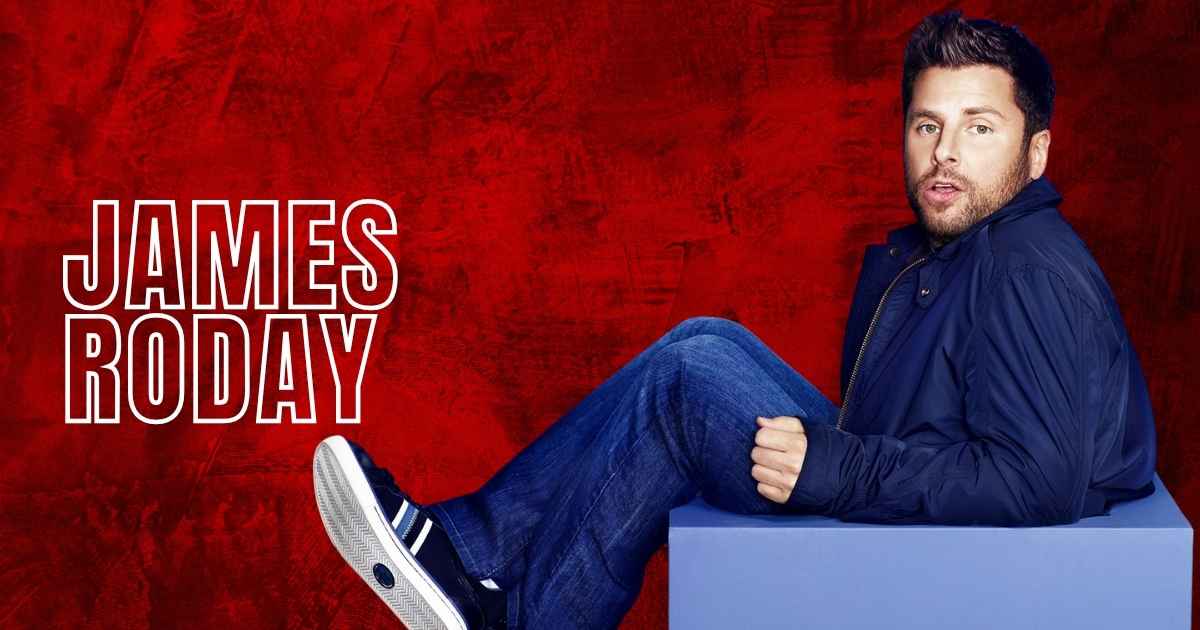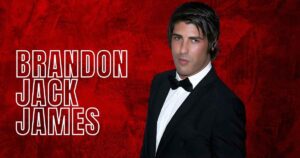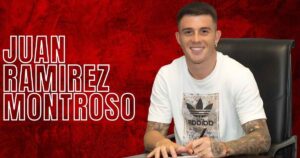When someone mentions a James Roday heart attack, many fans immediately worry about the beloved Psych star. However, the truth about James Roday Rodriguez’s heart condition reveals a different but equally compelling story one that highlights the importance of heart health awareness and the courage to address cardiac issues head-on.
Kalee Rogers Net Worth: Personal Life, Career, Husband, Age, Height, More
Quick Biography: James Roday Rodriguez
James Roday Rodriguez burst onto our screens as the charming, quick-witted Shawn Spencer in Psych. Born April 4, 1976, in San Antonio, Texas, he transformed from James David Rodriguez into a household name. His comedic timing seemed effortless. His energy appeared boundless.
But beneath that vibrant exterior, a congenital heart defect had been present since birth. This wasn’t the typical heart attack story you’d expect. Instead, it’s about facing a congenital anomaly that many people live with unknowingly. The actor’s journey from diagnosis through recovery and rehabilitation offers crucial lessons for anyone concerned about cardiovascular health.
Early Life and Background: The Making of a Star
Growing up in San Antonio’s vibrant community, young James showed early promise in performing arts. He attended NYU’s Experimental Theatre Wing, where grueling training schedules demanded physical stamina. Long rehearsals, late nights, and the relentless pursuit of excellence became his norm.
These early years established patterns that would later intersect with his heart condition. The entertainment industry doesn’t exactly encourage regular medical check-ups or adequate rest. Success often comes at a price sometimes that price involves ignoring heart warning signs your body desperately tries to communicate.
Heart Health Journey Timeline
Before the Heart Attack
James Roday’s situation differs from typical heart attack narratives. He was born with a hole in his heart a ventricular defect that went undetected for years. This congenital issue meant his heart worked harder than it should throughout his entire life.
Subtle signs often appeared but got dismissed:
- Unusual fatigue after physical exertion
- Occasional shortness of breath
- Minor chest discomfort attributed to stress
Many young adults experience similar symptoms and brush them off. That’s precisely what makes heart attack symptoms in younger adults so dangerous they’re easy to rationalize away.
The Heart Attack
When James Roday faced his cardiac issue, it wasn’t a Hollywood-style dramatic collapse. The myocardial episode emerged from years of undiagnosed structural heart problems. His body had been compensating magnificently, but compensation has limits.
The medical team discovered the congenital heart defect during evaluation. This revelation changed everything. Suddenly, a lifetime of unexplained symptoms made perfect sense. The diagnosis led directly to necessary intervention heart surgery that would repair the defect and potentially save his life.
| Heart Attack Type | Typical Cause | Roday’s Situation |
| Standard MI | Blocked arteries | Congenital defect |
| Age Factor | Usually 45+ | Present since birth |
| Warning Period | Days to weeks | Lifetime of subtle signs |
| Treatment | Stents/medication | Surgical repair |
Recovery and Rehabilitation
The healing process following heart surgery demands patience something actors aren’t always known for. James faced months of physical recovery, gradually rebuilding stamina and strength. His rehabilitation program included:
- Cardiac monitoring during initial recovery phase
- Gradual exercise progression under medical supervision
- Medication management for optimal healing
- Regular follow-up appointments to track progress
- Lifestyle transformation addressing diet and stress
The recuperation wasn’t just physical. Emotional support became equally critical. Friends, family, and colleagues rallied around him, demonstrating how family support systems in recovery literally save lives.
The Sudden James Roday Heart Attack: A Wake-Up Call
Discovering a lifelong heart condition in adulthood shakes your entire worldview. James Roday’s health scare forced him to reevaluate everything career ambitions, daily habits, and what truly matters.
“You realize mortality isn’t abstract anymore,” he’s reflected in interviews. The experience transformed his perspective on healthy heart maintenance and the importance of listening to your body’s signals.
This wake-up call extended beyond personal impact. Fans worldwide started conversations about cardiovascular awareness. When celebrities share health struggles, it normalizes discussions many people avoid. Suddenly, getting your heart checked doesn’t seem paranoid it seems smart.
Understanding Heart Attacks: Causes and Risk Factors
Let’s address some heart attack myths debunked immediately: Not all cardiac events involve clutching your chest and collapsing. Not all happen to elderly people. And having a congenital heart defect doesn’t mean you’ll definitely have problems but it significantly increases risk.
Major risk factors include:
- High blood pressure (hypertension)
- Elevated cholesterol levels
- Diabetes and metabolic disorders
- Smoking and tobacco use
- Sedentary lifestyle patterns
- Chronic stress exposure
- Birth defects affecting heart structure
- Family history of cardiac disease
The misconception correction we need most? Young, fit-looking people absolutely can have serious cardiac issues. James Roday appeared healthy and energetic. Meanwhile, his heart struggled with structural abnormalities since day one.
The Road to Recovery: Overcoming the Physical and Emotional Impact
Physical Recovery
Post-surgery care follows strict protocols designed to protect the healing heart. James couldn’t just jump back into filming immediately after his procedure. The healing process required:
Week 1-2: Hospital monitoring and initial ambulation
Week 3-6: Gradual activity increases, light walking
Month 2-3: Supervised cardiac rehabilitation begins
Month 4-6: Return to moderate exercise levels
Month 6+: Maintenance phase with ongoing monitoring
His doctors implemented a comprehensive rehabilitation program addressing cardiovascular fitness, strength, and flexibility. Each milestone represented progress toward full recovery and each setback required patience and persistence.
Emotional Recovery
The psychological resilience required after heart surgery often surprises people. Mental healing doesn’t follow neat timelines like physical rehabilitation. James experienced common post-cardiac-event emotions:
- Fear of recurrence and vulnerability
- Frustration with physical limitations
- Anxiety about career implications
- Gratitude for survival mixed with anger about the condition
- Mental strength building through therapy and support
Emotional support from loved ones proved invaluable. His support network provided the foundation for recovery emotions to process healthily rather than fester into depression or anxiety.
Lifestyle Changes
The most profound transformation came through habit modification. James embraced lifestyle transformation touching every aspect of daily life:
Dietary overhaul: Mediterranean-style eating, reduced sodium, increased omega-3s
Exercise commitment: Regular cardiovascular activity became non-negotiable
Stress management: Meditation, boundaries, and prioritizing mental health
Sleep hygiene: Consistent schedule supporting cardiac healing
Substance reduction: Eliminating anything compromising heart function
These weren’t temporary adjustments they represented permanent health improvements sustaining long-term wellness.
Professional Life: Balancing Career and Health After the James Roday Heart Attack
Returning to the demanding world of entertainment required careful career adjustments. Work-life balance shifted from abstract concept to survival necessity. James made professional adjustment decisions prioritizing his health-focused career approach.
He chose projects allowing adequate rest. He negotiated schedules accommodating medical appointments. He advocated for on-set accommodations supporting his cardiac health. This work recovery process demonstrated that successful careers needn’t destroy your body.
His daily routine changes included:
- Morning medication schedule never skipped
- Built-in exercise time protected fiercely
- Stress-reduction practices between takes
- Nutritious meal planning rather than craft service grazing
- Adequate sleep even during production
The Importance of Heart Health Awareness: Lessons from Roday’s Experience
James Roday’s story amplifies critical public awareness messages. His platform enables health campaigns reaching millions who might never seek cardiac information otherwise. The advocacy efforts emerging from his experience demonstrate how personal struggle can fuel positive change.
Key lessons include:
- Congenital conditions don’t always manifest immediately
- Subtle signs deserve medical evaluation, not dismissal
- Young adults need cardiovascular awareness too
- Regular screening catches problems early
- Heart wellness requires daily commitment
His awareness initiatives encourage people especially younger adults to advocate for thorough cardiac evaluation even when doctors might dismiss concerns based on age alone.
Preventive Measures: How to Protect Your Heart
Heart protection starts with knowledge and continues through consistent proactive measures. Here are prevention strategies everyone should implement:
Know Your Numbers
- Blood pressure: Check annually, target below 120/80
- Cholesterol: Test every 4-6 years minimum
- Blood sugar: Screen for diabetes risk
- Weight/BMI: Monitor and maintain healthy range
Implement Heart-Healthy Habits
Risk reduction comes from cumulative health habits:
- Exercise 150 minutes weekly minimum
- Eat Mediterranean-style diet rich in vegetables, fish, whole grains
- Don’t smoke ever
- Limit alcohol to moderate levels
- Manage stress through meditation, hobbies, connection
- Sleep 7-9 hours nightly
- Schedule regular preventive care appointments
Recognize Warning Signs
Factual explanation of symptoms requiring immediate medical attention:
- Chest pressure, squeezing, or fullness
- Pain radiating to arms, neck, jaw, back
- Shortness of breath with minimal exertion
- Unusual fatigue lasting days
- Nausea or cold sweats
- Lightheadedness or fainting
Don’t gamble with heart warning signs. Emergency evaluation beats regret every single time.
The Role of Family and Support Systems in Recovery
Family assistance transforms recovery outcomes dramatically. James benefited from loved ones’ help throughout his journey. Familial encouragement provided motivation during difficult rehabilitation days.
Support network contributions include:
- Emotional presence during medical procedures
- Practical help with meals, transportation, household tasks
- Accountability for medication and lifestyle changes
- Someone to call when fear or discouragement strikes
- Celebration of recovery milestones
Caregivers need support too. The stress of supporting someone through cardiac awareness and recovery can overwhelm even the strongest relationships. Support groups, therapy, and self-care for caregivers prevent burnout.
James Roday’s Advocacy for Heart Health Awareness
Using his platform for health promotion, James has contributed to awareness initiatives benefiting countless people. His willingness to discuss his congenital heart defect publicly reduces stigma and encourages others to seek evaluation.
His advocacy efforts remind us that vulnerability creates connection. When celebrities share authentic health struggles, fans feel permission to address their own concerns. This ripple effect from one person’s courage to millions of conversations potentially saves lives through increased cardiovascular awareness.
FAQS
What caused James Roday’s heart attack?
A congenital heart defect present since birth caused his condition.
What are common symptoms of a heart attack in younger adults?
Fatigue, shortness of breath, chest discomfort, and unusual exhaustion symptoms.
How did James Roday recover from his heart attack?
Through heart surgery, cardiac rehabilitation, lifestyle changes, and family support.
Did James Roday return to acting after his heart attack?
Yes, he returned with health-focused career adjustments and boundaries.
What lifestyle changes did James Roday make post-heart attack?
Diet overhaul, regular exercise, stress management, and improved sleep habits.
How has James Roday’s experience raised heart health awareness?
By publicly sharing his story, encouraging screenings, and normalizing conversations.
What role did family support play in James Roday’s recovery?
Family provided emotional encouragement, practical help, and accountability throughout recovery.
Is James Roday involved in heart health advocacy?
Yes, he uses his platform promoting cardiovascular awareness and screenings.
What can others learn from James Roday’s experience?
Warning signs matter; early detection saves lives; lifestyle changes work.
What preventive measures can reduce the risk of a heart attack?
Regular screenings, healthy diet, exercise, stress management, and no smoking.
Conclusion
The story of James Roday’s heart condition isn’t about a traditional heart attack it’s about something arguably more insidious: a congenital anomaly silently present for decades. His journey through diagnosis, heart surgery, recovery and rehabilitation illuminates crucial truths about heart health awareness.
Prevention strategies work. Lifestyle transformation matters. Family support systems in recovery prove essential. And perhaps most importantly heart warning signs demand attention regardless of your age or apparent fitness level.
James transformed his health scare into powerful advocacy, demonstrating how personal challenges can fuel public awareness benefiting millions. His health-focused career approach proves that professional success and cardiac wellness aren’t mutually exclusive.
Your heart deserves the same attention, care, and respect you give everything else you value. Schedule that check-up. Implement those health improvements. Build your support network. Start your habit modification today.
Because cardiac events don’t discriminate. But knowledge, proactive measures, and consistent heart care dramatically shift the odds in your favor. Don’t wait for your own wake-up call. Let James Roday’s experience be the catalyst for protecting your most vital organ starting right now.









